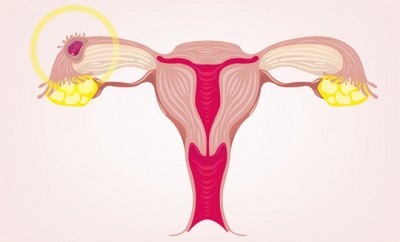Implantation Spotting or Light Bleeding – Signs and Symptoms
Most women get confused when they notice implantation spotting or light bleeding. You may already known that a woman’s reproductive cycle consists of different phases including puberty, menstruation flow, pregnancy and menopause. For most women, pregnancy is one of the most important phases of their lives. A missed period is one of the most definite indications of pregnancy. However, some women may also experience spotting as an early indication of pregnancy.
What is Implantation Spotting or Light Bleeding?
A woman gets pregnant when the egg released from her ovary is fertilised by sperm. It results in the formation of a fertilised egg, also known as zygote. This process occurs inside a woman’s fallopian tubes. During this period, the zygote travels from the fallopian tube and reaches the uterus. In the uterus, it divides to form a blastocyst. A blastocyst is a small ball of cells with a protective shell or outer covering around it.
Once a blastocyst has reached your uterus, it leaves the outer covering and attaches itself to the inner lining of your uterus. This attachment allows a blastocyst to form basic links with your blood vessels. Your blood cells will supply the necessary nutrients and oxygen for its growth and development.
Read also: Implantation Bleeding – Top 5 Signs Indicating Early Pregnancy!
As the blastocyst penetrates your endometrium or outer covering and attaches itself to uterus lining, you may experience some light bleeding or spotting. This blood is secreted by your uterus and comes out of your vagina. It is called light implantation bleeding or spotting. It is considered to be the onset of pregnancy.
It is important to understand that not all women experience light implantation bleeding or spotting. At times, the blastocyst will not cause any bleeding. In fact, only one-third women experience spotting. You can identify the condition if you have an idea about its signs, symptoms and timeframe.
When Does Light Implantation Bleeding Occur?
Light implantation bleeding or spotting occurs between 6 to 12 days after ovulation. Usually, it happens before your expected menstruation date. Although menstruation cycle for women may vary, the average date of menstruation is considered to be the fourteenth day from ovulation. Spotting occurs anywhere between 6 to 12 days after ovulation. In simple words, light bleeding or spotting will occur during the third or fourth week from your last menstrual period.
Read also: Signs Of Implantation: What To Look Out For
The zygote or fertilised egg will take around 5 to 6 days to travel from your fallopian tubes to your uterus. Once it reaches your uterus, it will attach to the endometrium. Hence, light implantation bleeding or spotting will occur within 9 to 12 days of ovulation.
In some cases, spotting may also occur as early as 6 days. To be precise, exact time of light implantation bleeding or spotting may vary from one woman to another. Once implantation successfully occurs, it will take some time for blood to come out from your uterus and reach the vagina.
What are the Signs of Light Implantation Bleeding?
As the name suggests, light implantation bleeding or spotting will cause spots of blood around your vagina. The amount of bleeding will always vary from one woman to another. Most of the time, spotting or light bleeding does not cause any serious symptoms. However, some women may develop mild symptoms which include :
● Bloating, abdominal pain, vomiting, nausea
● Swollen and tender breasts
● Fatigue and frequent urination
● Heightened sensitivity to all kinds of odors
Read also: Implantation Bleeding or Period? 5 Leading Signs of Implantation Spotting
If you experience the above mentioned symptoms with a missed menstrual period, it may strongly indicate pregnancy. However, it is important to take a home pregnancy test to confirm your suspicion. You can also take a blood test or obstetric ultrasonography. If light implantation bleeding or spotting is accompanied by pain, you should consult a doctor immediately.
Pain may be caused by an ectopic pregnancy. It is a complicated condition in which the fertilized egg implants itself in some other tissue than your uterus lining. Most of the time, ectopic pregnancies occur in fallopian tubes. However, they may also occur in ovaries, cervix or abdomen.
How Long Does Light Implantation Bleeding Last?
Light implantation bleeding can last from a few hours to 3 days. As mentioned earlier, spotting or light bleeding is not similar to menstrual periods. Spots or light bleeding can vanish within a few hours or even last for about 3 days. The duration of these spots may vary from one woman to another. Moreover, some women experience light bleeding, while others experience heavy flow. For some women, it may even be a single, isolated episode of spotting. If you experience spotting or light bleeding, you should consult a doctor and ask for proper guidance. You should also take a home pregnancy test.
Read also: Discover the Most Common Implantation Symptoms
Difference Between Implantation Spotting or Light Bleeding and Menstruation
Here are some key differences :
Nature of discharge – One important difference is the nature of discharge from your vagina. During menstrual periods, you experience heavy flow which lasts for about 4 days. Moreover, menstrual discharge is red in color. However, in spotting, there is no actual bleeding. You only see brown and pink spots around your vagina.
Symptoms – Just like discharge, symptoms of spotting are also very different from menstrual periods. Unlike menstruation period, you don’t experience backache, pain or cramps in light implantation bleeding or spotting.
Read also: How long after ovulation does implantation occur? The answer revealed
Time of Occurrence – Spotting happens around 2 to 7 days before your menstruation date. Most women mistake spotting for menstruation. In such cases, you need to wait for 1 or 2 days. If light implantation bleeding or spotting does not get converted to heavy flow, it is simply spotting.
Duration – Unlike menstruation periods, light bleeding or spotting caused by implantation does not last for 4 days. However, some women may experience mild associated symptoms for 1 to 2 days.
According to studies and researches, around one-third women experience light implantation bleeding or spotting. Fortunately, there are no health risks or problems associated with spotting. In fact, some women don’t even notice it. However, sometimes the signs and symptoms may be more prominent. In such a case, you should consult your doctor immediately and take some guidance about implantation spotting.













